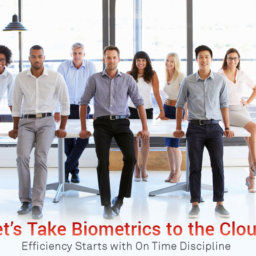A major trend in access control is its migration to IP. In fact, IP-based access control is now seen in most new buildings and projects. Central to IP-based access control is the access control management system, which, when integrated with other subsystems, can do much more than merely granting or denying access to users as they walk to a building.
What Defines Well-Integrated
So what makes an access control management system well-integrated? There are several criteria, for example the types of subsystems that can be integrated, the ability to have them interoperate smoothly, and the flexibility the system provides when it comes to supporting the types of hardware and credential. Finally, open standards are key to ensure interoperability, future scalability, and cost reduction.
Systems that Can Be Integrated
One factor to determine whether an access control management system is well-integrated is its ability to integrate with different types of subsystems. “There are several subsystems that can be integrated into the access control management software, which goes beyond granting or denying access to users. Elevator, parking, meal vending, CCTV, and student ID cards are all examples of the subsystems that can be integrated. Besides the aforementioned, today’s access control management systems can also integrate with HVAC (heating, ventilation, and air conditioning) as well as telecommunications systems to save energy and provide more convenience for users.
If the CEO of a company presents his credential to the outside of his building, systems will understand what areas of the building the CEO will get through to get to his office. There is no need to illuminate the entire building. The same thing extends over to telecommunications. When someone comes in, the system will transfer their out-of-office e-mail to in-office. It can not only adjust their e-mail status but also switch the forwarding to their desktop versus their mobile phone.
Smooth Interoperability
A well-integrated access control management system can also allow the different subsystems to operate seamlessly at the same time, even to the point where the customer cannot distinguish the boundary between the systems.
The best integrations which achieve this, tend to exhibit the following traits: a comprehensive set of application programming interfaces (APIs), good integration documentation that allows the integrator to achieve a seamless and bug-free integration, a comprehensive testing process ensuring bugs and weaknesses in the integration are found before they reach the customer, and a track record of successful previous integrations.
Compatibility With Different Hardware
A good access control management system should also be able to support different types of hardware and credentials. It is important for integrative systems that they can handle and integrate different types of hardware within the same system to be called well-integrated.
For example, it should be able to handle different types of door controllers, as well as different readers and credential technologies to be truly integrative and offer the benefits of such an open system to the end-user/system owner.
Openness Is Key
To enable this kind of integration, open standards are critical, ensuring that interoperability between disparate systems is achievable. Open protocols and agreed standards such as ONVIF have made it possible to integrate previously disparate systems and open up the possibilities of what a truly integrated security system can offer.
Openness, meanwhile, also ensures scalability, allowing users to add or integrate more systems into the access control management software, regardless of the brand.
Access Control and Video Integration
Access control management systems integrated with videos is perhaps the most popular integration among users. Due to the increased situational awareness that they provide, such integrated solutions are seeing rising demands and applications, especially in areas that are more critical and sensitive in nature.
Integration between access control and video is set to see rising demands. When access control and videos are integrated, no matter which one serves as the anchor platform, the two complement and add intelligence to each other. You get maximum control and protection of your premises and benefit from the unlimited scalability and extreme controllability.
If you have access control tied to video, you are able to see what credential was utilized at what time of day and at what location, and that adds a lot of value in your video management. In the past, you were able to put an IP camera or Wi-Fi camera in, but you weren’t able to afford to put a reader or access control device at that opening, so you had to scroll through footage and try to distinguish what was occurring simply based on the visual video. Now, because you are able to deploy access control at that portal as well, you’re able to really connect it and sort it based on an audited event in a credential.
Due to the increased situational awareness such integration brings, it is commonly used in higher security applications. These include parts of a healthcare environments and areas where there are sensitive assets.




There are various software tools which are very useful to operate business processes like ERP. Thanks for sharing the above information.
[…] lost productivity in the event of network downtime. And with the ability to configure backup AP management controllers for remotely managed APs, network administrators can guarantee seamless network operation and […]